Raising your prices is inevitable when you’re running a small business.
Sometimes costs go up or you just feel you deserve more for what you’re providing, and you need to strategically move forward with a change to your pricing model.
Regardless of the reasoning behind your price increase, it’s crucial that you inform your clients about the change without losing them as customers.
In this article, we’ll give you some advice on how to write a price increase email, from providing an advanced warning to giving a reasonable explanation, that will ensure that your customers understand and accept your request.
- Inform Your Customers in Advance
- Personalize Your Price Increase Emails
- Be Direct About the Price Increase
- Give an Explanation for the Price Increase
- Let Customers Know How to Get Support
- Conclusion
Inform Your Customers in Advance
Aware of inflation and market forces, customers typically anticipate that their service providers will have to raise their prices at some point in their relationship, so they’re often understanding when it happens, as long as it isn’t a surprise.
Changing your prices unexpectedly can mess with their operating budget, make them feel forced into a corner, and damage your relationship.
Instead, try to inform your customers that you intend to raise the price at least 2 months in advance.
This gives them sufficient time to adjust their budget, prepare for the change, and consider their options.
For example, if you were planning to raise prices by 20% on January 1st, let your customers know by November 1st, preferably through a phone call or a personalized price increase email.
If your service is something a customer values, they’ll figure out the best way to continue affording your services.
That might mean cutting costs in other areas, which can take a bit of time.
It’s best to state the effective date at the beginning of your pricing email, even in the subject line, so that your customers instantly know that they have a reasonable amount of time to prepare for the change.
The below email from Disney does a good job of applying this rule:
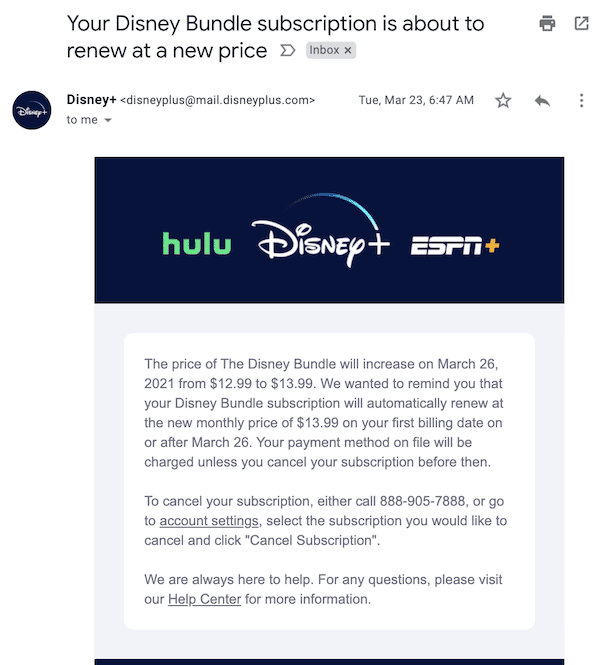
Source: Wordstream
If 2 months is too long to go without receiving the additional funds, you could get away with telling them 1 month before the price change, but anything less than that will likely leave a bad taste in your customer’s mouth.
One way to make it easier for them to accept the price increase is to give them the option to purchase more services before the increase takes effect.
For example, a freelance writer who usually writes five articles per month for their client and plans to begin charging more in a month might tell the client they can raise the article count to eight this month so the client gets a few more articles at the current, lower rate.
Clients will appreciate you providing them with this option and understand that you’re trying your best to save them money and help them manage the price increase.
In sum, the earlier you tell your customers about an upcoming change in the cost of your service, the more understanding they’ll be about it, and thus less likely to start looking for another, cheaper vendor.
Personalize Your Price Increase Emails
Make sure to personalize your price increase emails for each customer segment so that your customers receive the information most pertinent to their situation.
This is especially important if you offer a variety of subscription plans, meaning that the price increase will affect each group differently.
For example, if a customer was on a basic plan their new price would most certainly be different from the new price for a customer on your premium plan.
It’s also a good idea to send a pricing change email even to your customers on a free plan or trial, as the increase might affect them if they decide to buy an upgrade any time soon.
The below pricing email example handles this situation well:
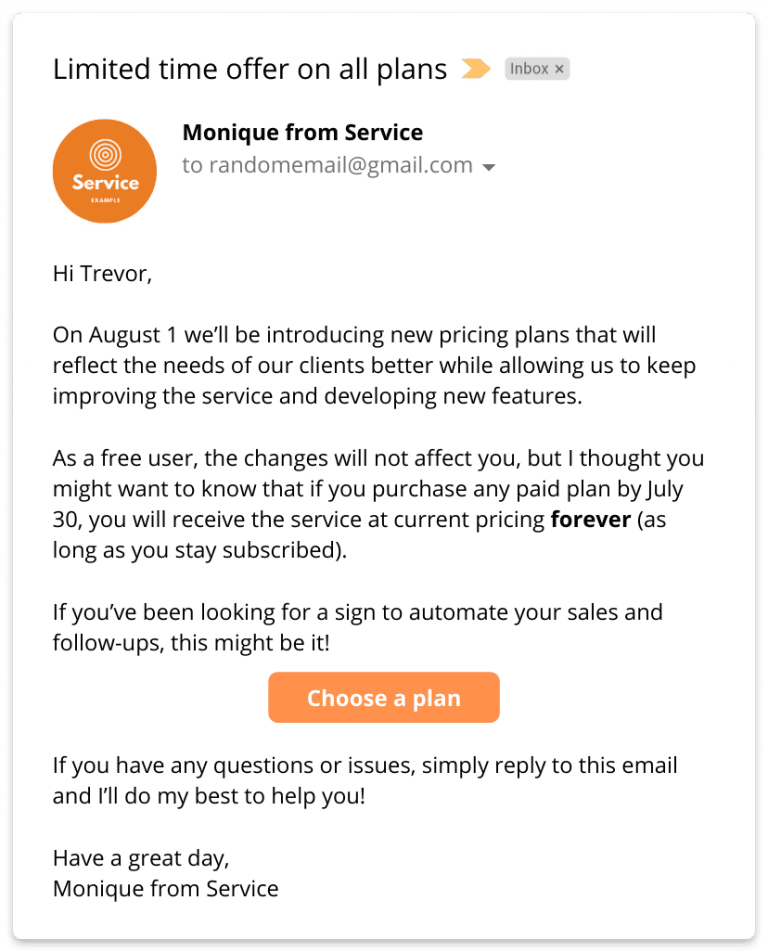
Source: Dripify
There are several ways you can personalize your price increase emails to improve the customer experience and reduce potential churn.
One strategy is giving your longest and most loyal customers a special offer.
For example, you could give your customers who have been with you for over a year the special ability to receive your service at the current price for an extra month.
This not only helps them adjust to the change but also wins their goodwill, as it proves to them that your business rewards customer loyalty.
Also, make sure that you send special-case customers emails that reflect their current situation.
If one customer is getting your service at a 10% discount already, make sure you factor that into your calculation of their new price.
To efficiently personalize your price increase emails to your various customer segments and also to each individual, consider using an online payments software like Regpack that comes with built-in email communication tools.
With it, you can create email templates with fields like {customer name} or even {current price} that auto-populate with customer data you have in the system.
This allows you to quickly send out bulk emails that are automatically personalized to each recipient.
Plus, you can also easily filter your recipients by various data points so that your emails only go out to customers who meet certain criteria, like subscribing to a certain plan or tier.
Best of all, you can even set up emails to go out when certain actions or dates occur:
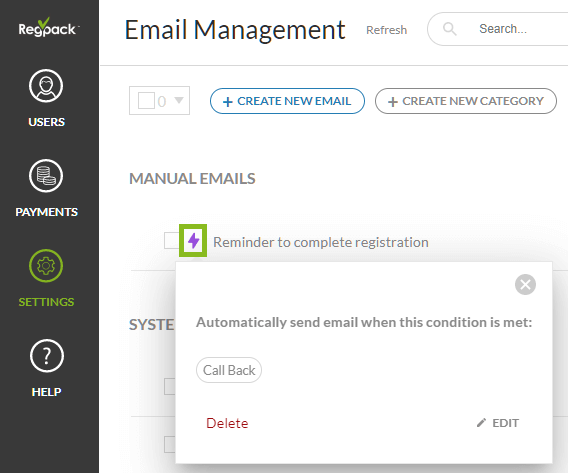
Source: Regpack
For example, you could schedule all the emails to go out 2 months before the pricing increase date, and even schedule follow-up emails to ensure that your customers got the memo.
Personalizing your pricing increase emails is a great way to ensure all of your customers receive the details relevant to their current plan and relationship with your company.
Be Direct About the Price Increase
Companies should avoid being vague when communicating their intention to raise their prices.
This is not the time to bury the lede. Your customers want clarity and straightforwardness when it comes to pricing.
Be direct from the start by using your subject line to clearly announce the price increase so that customers know before opening it what to expect.
That way, they won’t accidentally delete your email, or be caught off guard.
Some examples of straightforward email subject lines are “pricing increasing on July 15th” or “details on upcoming price increase”.
Here’s an example of a pricing increase email from Barcel. Note the directness of their subject line:
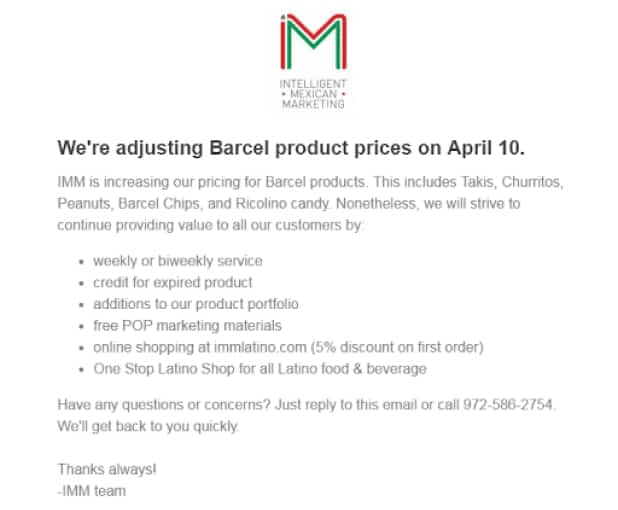
Source: Prisync
“We’re adjusting Barcel product prices on April 10” is great because it tells the recipient when the price increases begin in a straightforward manner.
This one is even better because it also tells customers the new price right away:

Source: Live Agent
As for the body of your email, it’s best practice to put the most important information about the price increase further toward the top of the email.
Within the first few sentences, tell your customers what the new prices will be, why the increase is occurring, who it affects, and when it is set to take place.
Your tone should be direct and empathetic without sounding apologetic—you’ve done nothing wrong by increasing your prices.
The below pricing increase email template from HubSpot does a good job of executing such a tone:
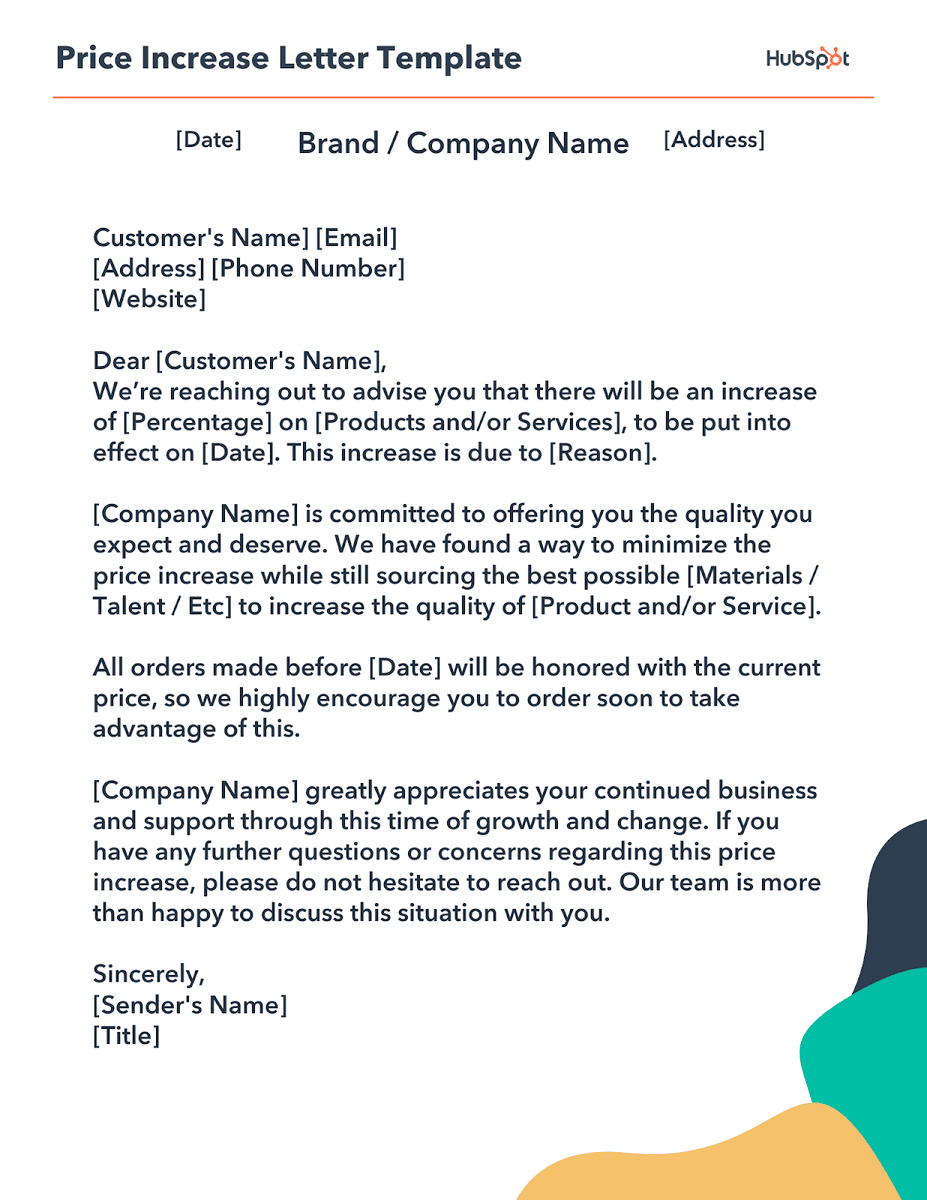
Source: HubSpot
Note that HubSpot tells their customers to order soon so that they can get products at the before-increase price. Customers will appreciate you looking out for their best interests.
As a final tip, avoid using industry jargon or stiff, academic sentences. Instead, be conversational and write in a way that everyone can easily interpret and relate to.
Consider using bullet points if you feel that this format will make the information more digestible and easy to review.
Learning that they’re going to have to pay more money to retain your services is enough already—no one wants to be confused and talked down to as well.
Give an Explanation for the Price Increase
One of the best negotiation tactics is to make the other party empathize with your situation and understand why you need what you’re asking for.
In the case of raising prices, it’s therefore important to give your customers an in-depth explanation about why you have to make this pricing change.
For example, a small business owner might mention that they’re raising the price because of inflation and the higher costs of inputs.
Explaining your reasoning will help the customer see your situation from your point of view and realize that asking for a price increase is really the only logical choice in your world.
As long as they’re reasonable, they’ll accept the increase with grace.
Here are some examples of justifiable reasons to give for the price increase:
| You want to improve the quality of your products or services. |
| The market is willing to pay a higher price for your services. |
| You want to invest in new technology that will improve your services. |
| The costs of your staff, inputs, etc., have risen. |
In addition to giving the customer reasons for the change, also make sure to explain how and why this price increase will enable you to provide them with a better service.
For example, a graphic designer might explain that their designs will be more intricate and effective because they will be able to purchase better tools to work on them.
A small business providing after-school programs might inform their customers that the extra revenue will help them hire more classroom aids so that students get more attention or allow them to invest in new learning technology that will improve the students’ overall experience.
The best place to explain the reasoning behind your price increase is within a personalized price increase email.
According to research, 86% of Americans believe transparency from businesses is more important than ever before. It makes them feel connected with your business.
When you give your customers a behind-the-scenes look into your business and its needs, customers will be more understanding of your price increase.
They won’t feel like they’re being taken advantage of.
Let Customers Know How to Get Support
When you raise the prices of your services, it’s crucial that you make the transition as painless as possible for your customers.
An excellent way to preclude any frustration caused by confusion is to inform your customers on how to get information about the pricing change, such as when it will go into effect or which specific services it includes.
On your website, create an FAQ page that addresses the most common questions about your pricing increase.
Anticipate their concerns so you can properly assuage them in writing on the webpage.
And in your pricing increase email, link to this FAQ page so your customers can easily find it to learn more, like the email below does:
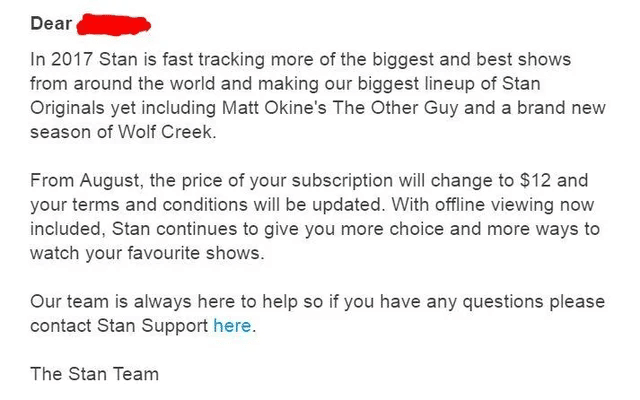
Source: Reddit
In addition to the link, also give them a way to reach your support team directly, such as a phone number or email address.
Some customers will want to talk to an actual representative of your company about the change, so ensure that your customer support staff members know the ins and outs of the pricing increase.
Among other answers to common questions, your support staff should know the following information to effectively help your customers through this transition:
| When the price change goes into effect |
| What services it encompasses |
| Who is affected |
| Why the price increase is happening |
| What actions the customer has to take |
| The new prices |
Customers become frustrated when they can’t get straight answers to their questions about pricing, so really make sure your support staff can talk about the topics listed above with ease and authority.
At times, your customer support staff might encounter an angry or even aggressive customer. Teach them how to properly deal with difficult customers.
If your customer feels listened to, has their questions answered, and understands the relevant details of the price increase, they’ll be less likely to react inappropriately.
Conclusion
Increasing the price of your service is a great way to earn more revenue that your business can use to make investments, weather hard times, or increase profits.
To ensure that your customers receive the news without feeling cheated or angry, do your best to inform them early about the price increase and to explain why it’s happening in a personalized and direct price increase email.
With logical reasoning and clear details, as well as a love for your service, there’s no reason why your customers should run off just because of a simple price increase.


















